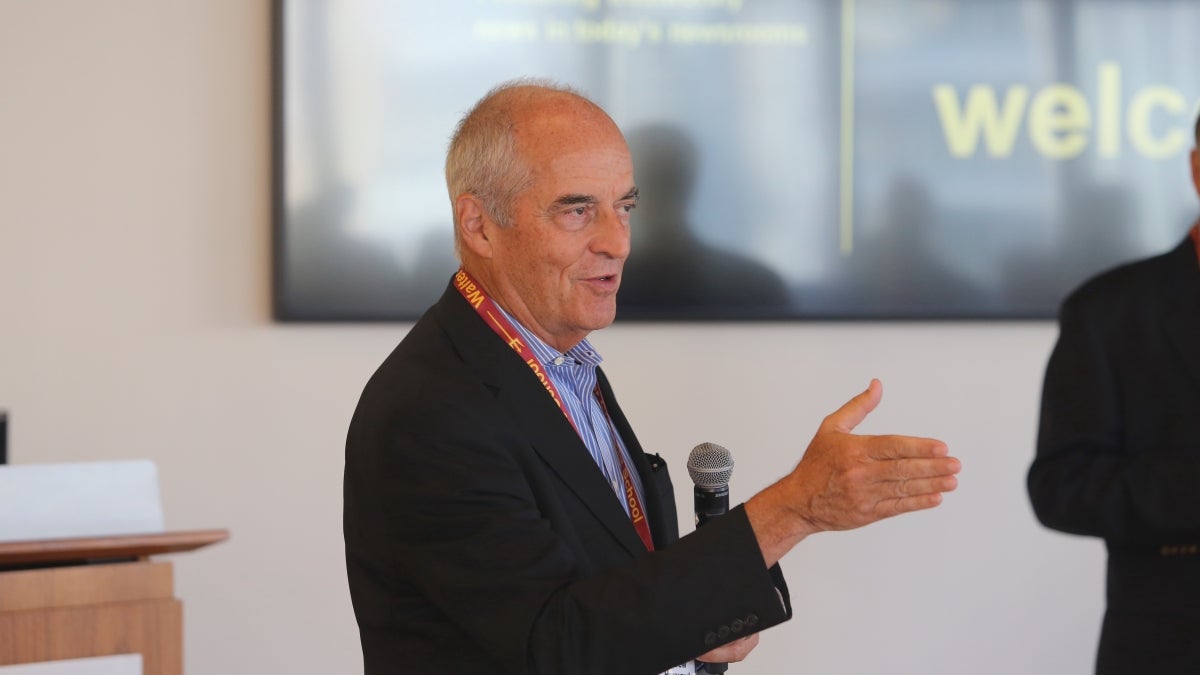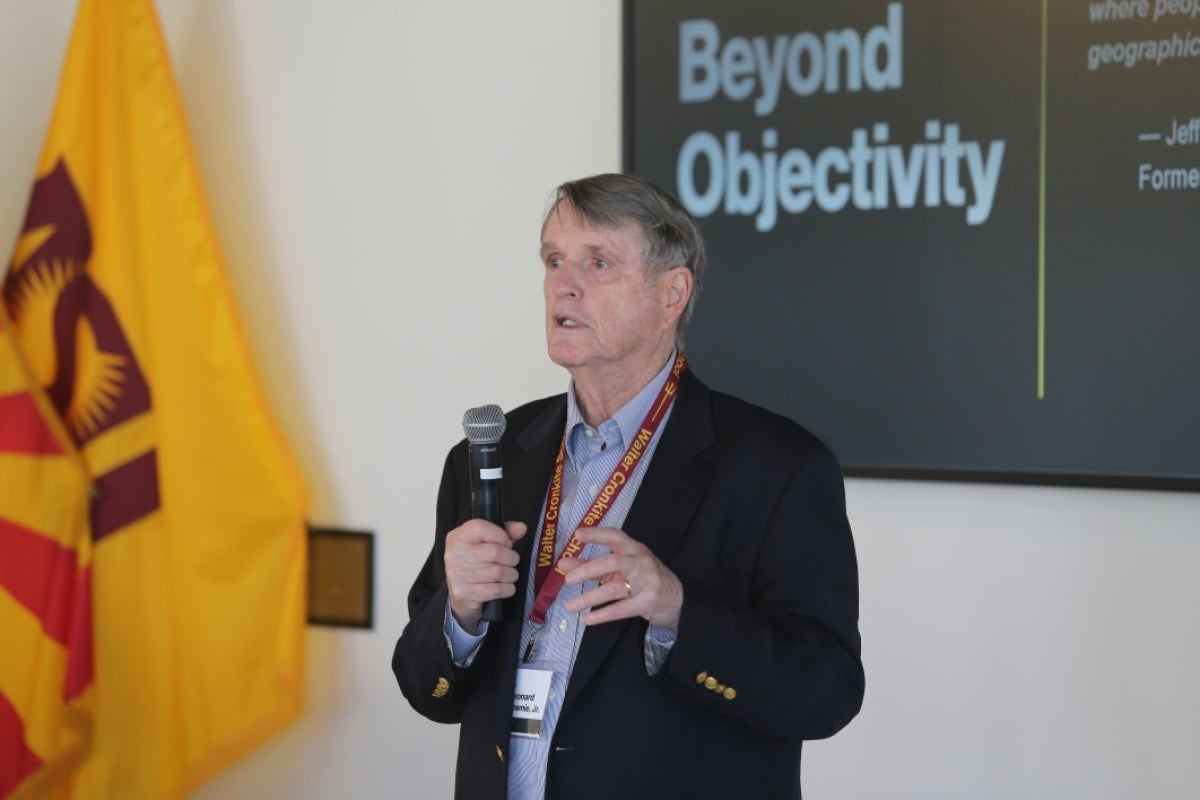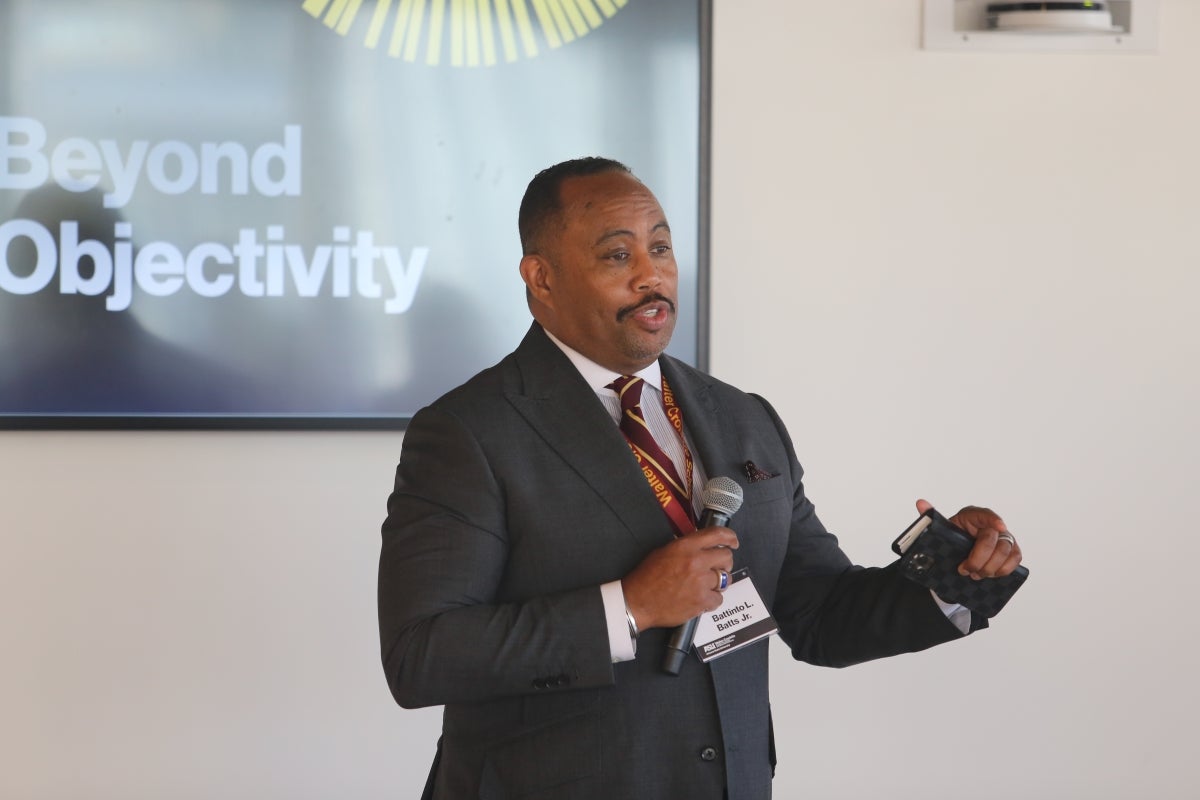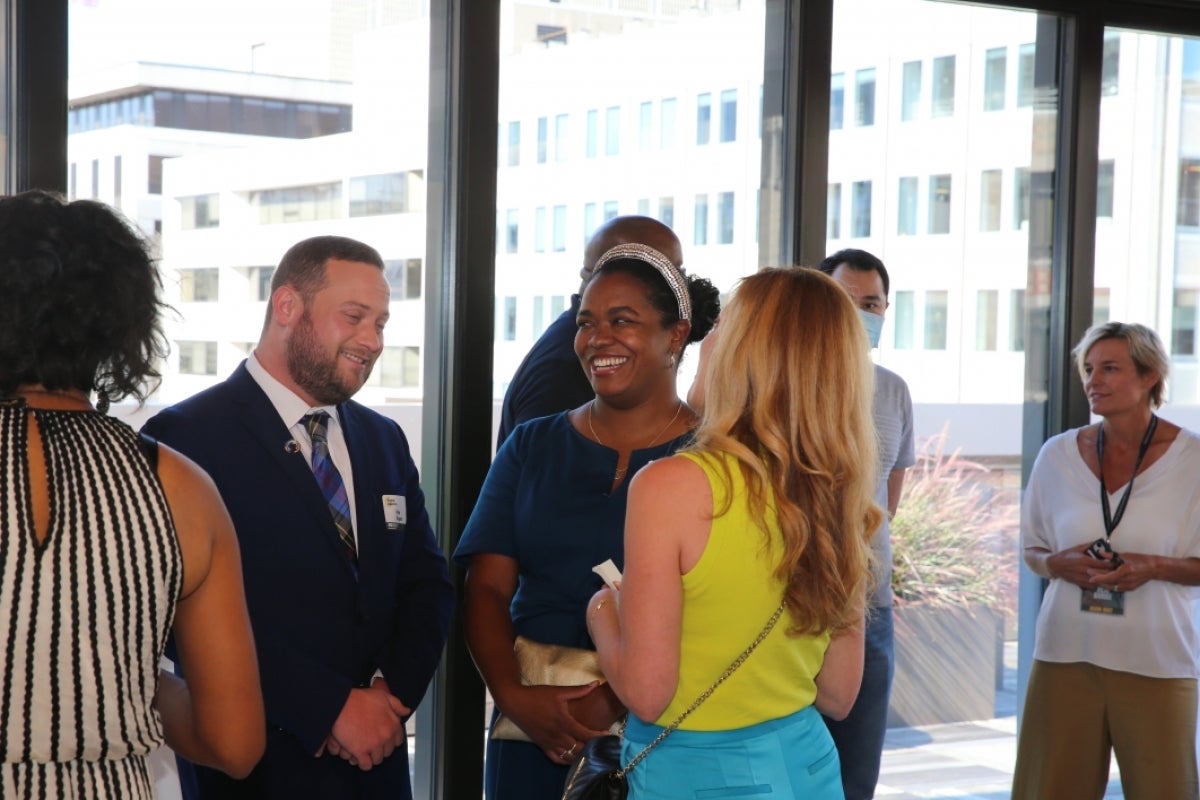What is the objective of objectivity?

Andrew Heyward speaks at an event celebrating the release of the report "Beyond Objectivity: Producing Trustworthy News in Today’s Newsrooms" on Aug. 8 in Washington, D.C. Photo by Hager Sharp
Oftentimes, one of the first lessons a journalist learns is that objectivity is crucial to reporting. From high school newsrooms to professional journalists, the idea of presenting both sides of a story, without any insertion of opinion, has historically been taught as one of the cornerstones of good reporting.
But as the news continues to change, along with the reporters who cover it, some journalists are left wondering: What if objectivity isn’t all we’ve made it out to be? Leonard Downie Jr. and Andrew Heyward, both longtime journalists and professors at the Walter Cronkite School of Journalism and Mass Communication, conducted research to explore that very question.
Downie and Heyward’s report, "Beyond Objectivity: Producing Trustworthy News in Today’s Newsrooms," compiles insights from interviews with more than 75 news leaders and journalists from across the media, and their take on the changing role of objectivity in reporting today’s important stories discussing race, gender, sexuality and politics. Downie and Heyward celebrated the report on Aug. 8 in Washington, D.C., in a reception with ASU alumni, journalists and Battino Batts, dean of the Cronkite School.
“We wanted to point the way, based on what we learned from our interviews, how to go about doing the best possible factual journalism in a much more diverse society than it’s been in the past and with increasingly diverse news media,” Downie said at the reception.
The report sees potential harm on both sides of the objectivity spectrum. In an era fraught with “fake news,” reporters need to focus on the facts. However, the report argues that covering complex issues like climate change, race or sexuality from a “both-sides-ism” point of view could be damaging.
“As early as the turbulent 1960s, some younger journalists, especially investigative reporters, began to question what objectivity really meant if it did not challenge power, privilege and inequality,” the report said.
The report does not argue for personal opinions or subjectivity in news. Instead, it challenges readers and newsrooms across the country to explore what objectivity really means, and if there is perhaps a better way to give readers all of the facts and perspectives associated with today’s news.
Neil Barsky, founder of The Marshall Project, told the authors that “the journalist’s job is truth, not objectivity. It is getting close to the reality, notwithstanding that we all have biases and passions.”
“The idea was making a case for bedrock values like fairness and accuracy, without this notion that there’s just one absolute truth handed down by an editor, that’s reinforced by a news organization,” Heyward said at the reception. “The world is way too complex to be summarized by a single point of view. What we're advocating is bringing what’s actually been said, bringing context to the story in a way that gets you beyond just the facts to something that is closer to the truth.”
Access the full report online.
More Law, journalism and politics

Cronkite School launches Women Leaders in Sports Media live-learn program
Women in a new sports media program at Arizona State University got a solid game plan from a sports veteran at an Aug. 20 welcome…

ASU center to host the Pursuits of Education and Excellence Symposium
The Center for the Study of Race and Democracy (CSRD) at Arizona State University is introducing the Pursuits of Education and…
ASU journalism students dominate NATAS Student Production Award nominations
Students at Arizona State University’s Walter Cronkite School of Journalism and Mass Communication dominated the nominations…


